Mohammad Pirhooshyaran
Quantum Circuit Design Search
Jan 04, 2021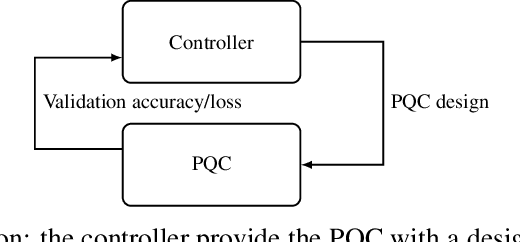
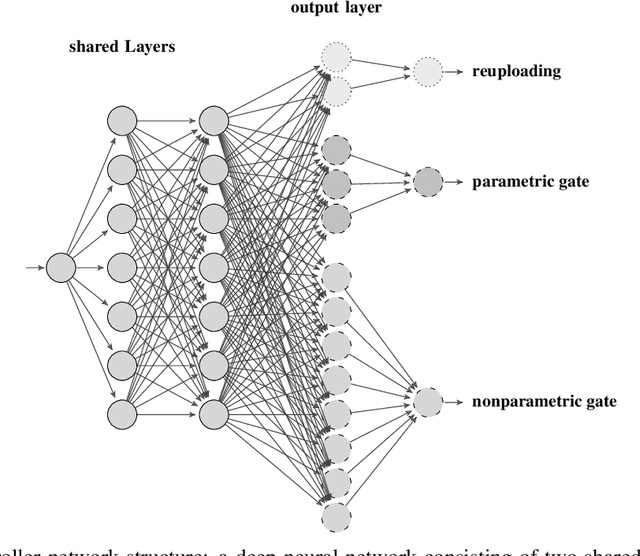
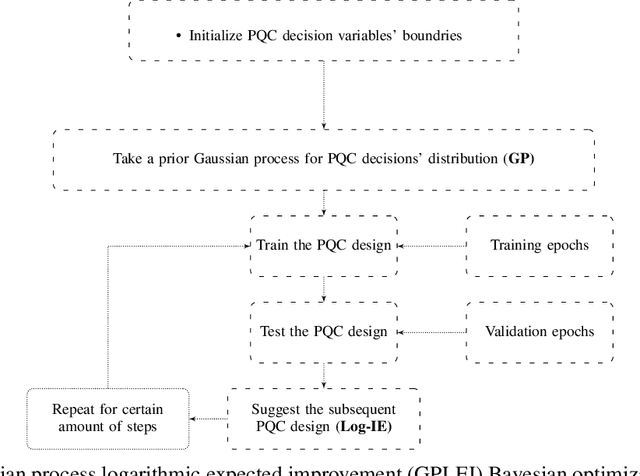
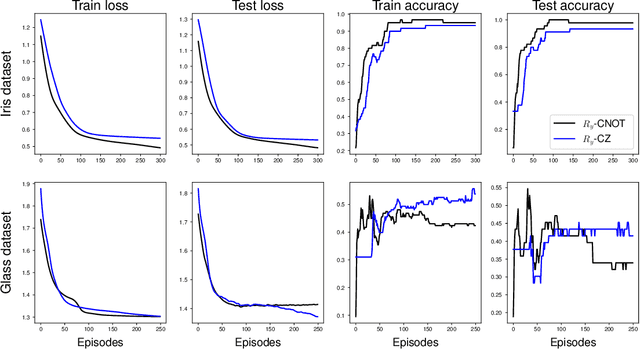
Abstract:This article explores search strategies for the design of parameterized quantum circuits. We propose several optimization approaches including random search plus survival of the fittest, reinforcement learning both with classical and hybrid quantum classical controllers and Bayesian optimization as decision makers to design a quantum circuit in an automated way for a specific task such as multi-labeled classification over a dataset. We introduce nontrivial circuit architectures that are arduous to be hand-designed and efficient in terms of trainability. In addition, we introduce reuploading of initial data into quantum circuits as an option to find more general designs. We numerically show that some of the suggested architectures for the Iris dataset accomplish better results compared to the established parameterized quantum circuit designs in the literature. In addition, we investigate the trainability of these structures on the unseen dataset Glass. We report meaningful advantages over the benchmarks for the classification of the Glass dataset which supports the fact that the suggested designs are inherently more trainable.
Simultaneous Decision Making for Stochastic Multi-echelon Inventory Optimization with Deep Neural Networks as Decision Makers
Jun 10, 2020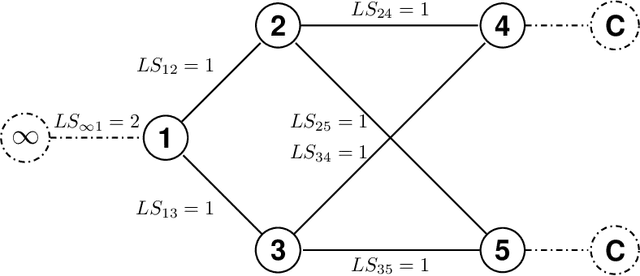
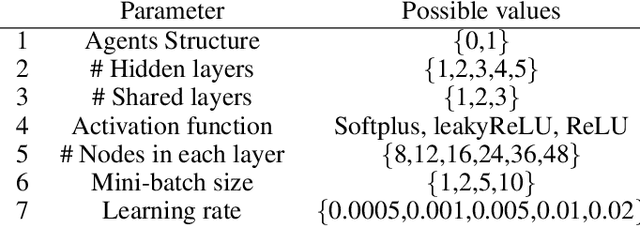
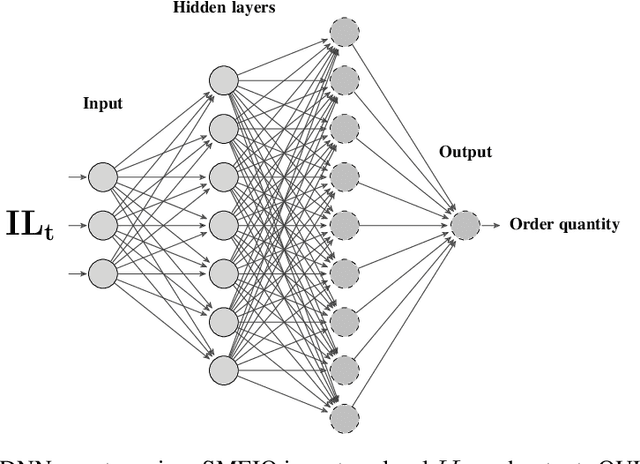

Abstract:This study focuses on simultaneous decision making for stochastic multi-echelon inventory optimization problems. Mixed supply chain networks are considered that may contain assembly or distribution nodes, or both, and may use nonlinear cost structure. We present a framework which uses deep neural networks as agents responsible for finding order-up-to levels for any desired components of the general supply chain network. Agents simultaneously interact with the environment in an unsupervised manner to minimize total inventory cost. Not only does this study consider several decision-makers simultaneously for stages of a general supply chain network, but it also presents clear and interpretable order-up-to levels. First, we numerically show the effectiveness of the method by solving newsvendor and serial supply chain networks and compare the results with the available closed form solutions for these settings. Then, we investigate a mixed supply chain network and a more general case study. The findings indicate that the proposed method performs better in terms of objective function values and the number of interactions with the environment compared to alternatives. In addition, the method finds inventory policies similar to simple base-stock policies for general SCNs. Moreover, we generally notice that for echelons closer to the source, fixed optimal order-up-to levels can be considerably larger than the expected demands these echelons observe.
Feature Engineering and Forecasting via Integration of Derivative-free Optimization and Ensemble of Sequence-to-sequence Networks: Renewable Energy Case Studies
Sep 12, 2019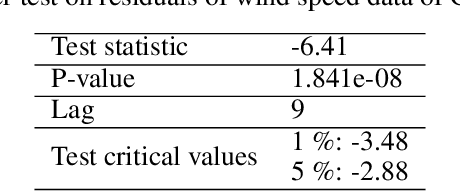
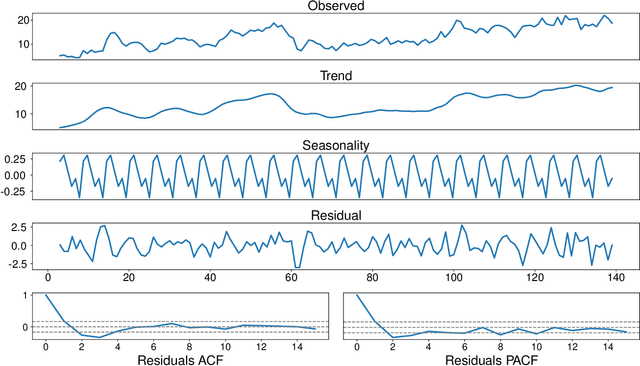
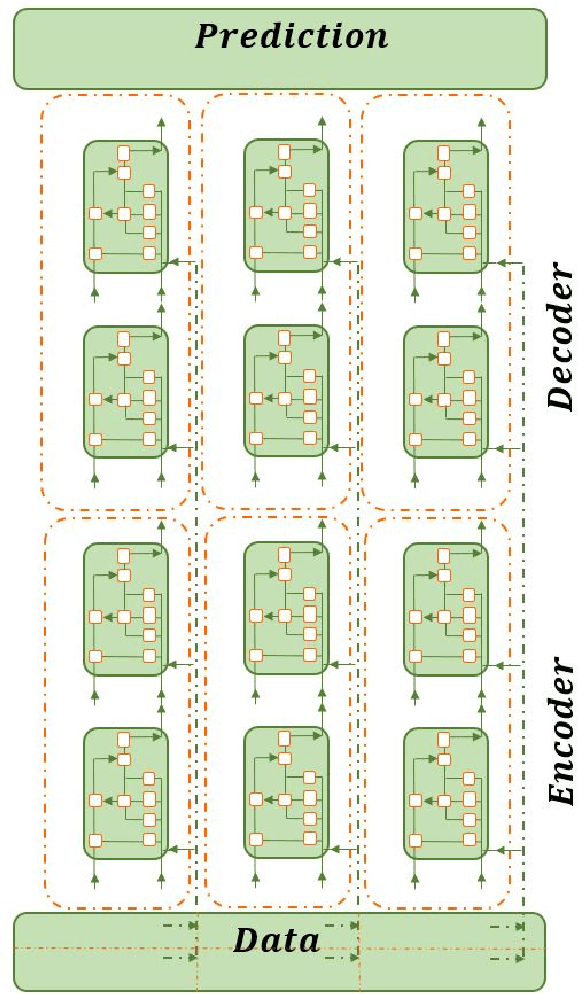

Abstract:This research introduces a framework for forecasting, reconstruction and feature engineering of multivariate processes. We integrate derivative-free optimization with ensemble of sequence-to-sequence networks. We design a new resampling technique called additive which along with Bootstrap aggregating (bagging) resampling are applied to initialize the ensemble structure. We explore the proposed framework performance on three renewable energy sources wind, solar and ocean wave. We conduct several short- to long-term forecasts showing the superiority of the proposed method compare to numerous machine learning techniques. The findings indicate that the introduced method performs reasonably better when the forecasting horizon becomes longer. In addition, we modify the framework for automated feature selection. The model represents a clear interpretation of the selected features. We investigate the effects of different environmental and marine factors on the wind speed and ocean output power respectively and report the selected features. Moreover, we explore the online forecasting setting and illustrate that the model exceeds alternatives through different measurement errors.
Multivariate, Multistep Forecasting, Reconstruction and Feature Selection of Ocean Waves via Recurrent and Sequence-to-Sequence Networks
Jun 01, 2019
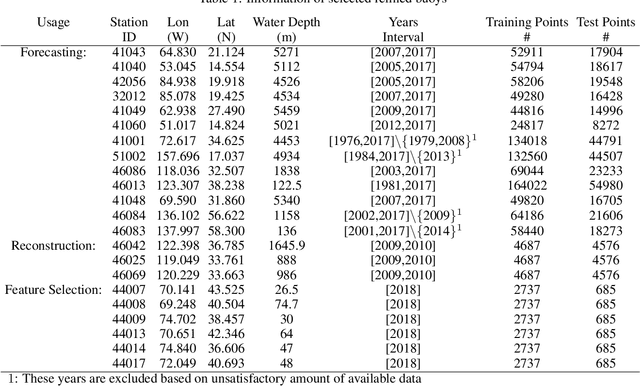
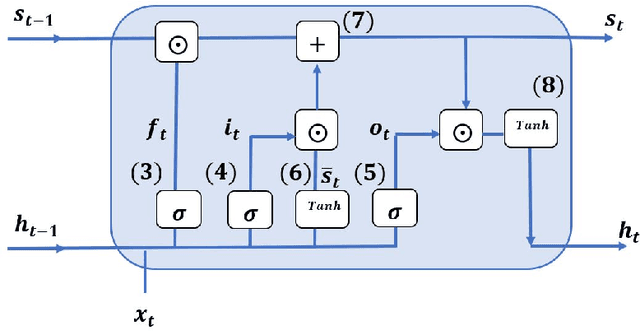
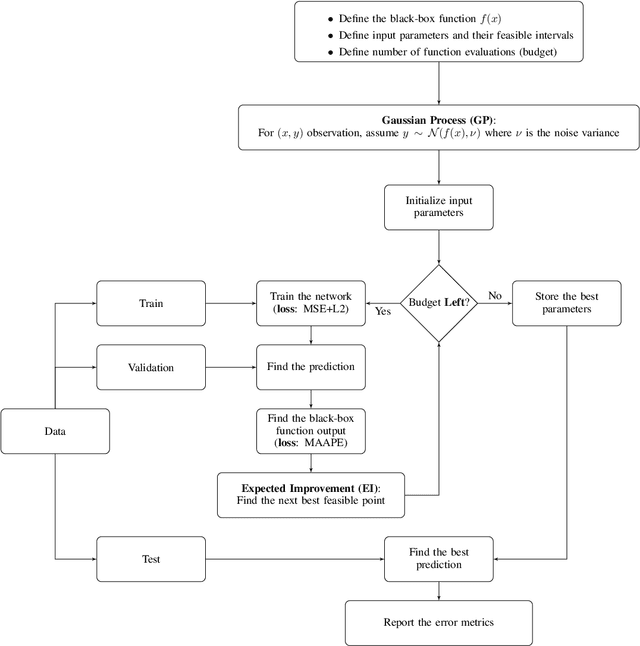
Abstract:This article explores the concepts of ocean wave multivariate multistep forecasting, reconstruction and feature selection. We introduce recurrent neural network frameworks, integrated with Bayesian hyperparameter optimization and Elastic Net methods. We consider both short- and long-term forecasts and reconstruction, for significant wave height and output power of the ocean waves. Sequence-to-sequence neural networks are being developed for the first time to reconstruct the missing characteristics of ocean waves based on information from nearby wave sensors. Our results indicate that the Adam and AMSGrad optimization algorithms are the most robust ones to optimize the sequence-to-sequence network. For the case of significant wave height reconstruction, we compare the proposed methods with alternatives on a well-studied dataset. We show the superiority of the proposed methods considering several error metrics. We design a new case study based on measurement stations along the east coast of the United States and investigate the feature selection concept. Comparisons substantiate the benefit of utilizing Elastic Net. Moreover, case study results indicate that when the number of features is considerable, having deeper structures improves the performance.
 Add to Chrome
Add to Chrome Add to Firefox
Add to Firefox Add to Edge
Add to Edge